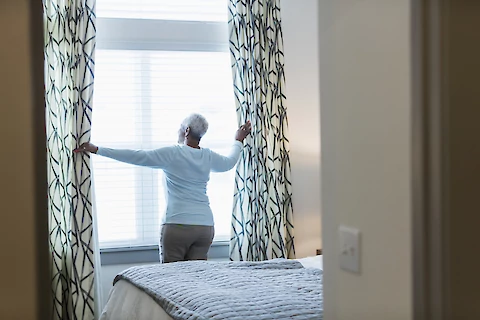
How Adding More Lights and Natural Lighting to Your Home Can Help With Seasonal Affective Disorders
The holidays are just around the corner. It's that time of year again, the ideal chance for folks to take a vacation from their regular schedule and spend time with friends and loved ones. Though the holiday season is typically considered a time for celebration, togetherness, and connection, the holiday season can be extremely different for seniors. It is the time of year when many seniors face increased loneliness and depressive symptoms, such as seasonal affective disorder (SAD).
Seasonal Affective Disorder
One of the most apparent causes of symptoms like excessive sleeping, low energy, or depression during the beginning of winter is SAD. Seasonal Affective Disorder, also known as winter depression or winter blues, can affect everyone. In seniors, seasonal affective disorder can have detrimental long-term effects on their health.
How Adding More Lights and Natural Lighting to Your Home Can Help with Seasonal Affective Disorders
Many seniors spend the majority of their time indoors during the winter. As a result, the cycle and amount of sunlight most seniors receive are tampered with, leading to light deprivation. This means that most seniors do not get enough vitamin D, which increases their risk of developing winter SAD.
Using brighter lighting is a common way of easing SAD symptoms and dealing with sunlight deprivation in seniors. Adding more lights to a home can also cause a considerable difference in a senior's mood and energy level. Artificial lights, such as high-quality therapy light with the same intensity, color, and wavelength as sunlight, can compensate for the reduced exposure to sunlight. A therapy light mimics natural outdoor light. Using a therapy light alters brain chemicals associated with mood and eases SAD symptoms.
Allowing enough natural light into your house is necessary for maintaining a healthy sleep-wake cycle. Serotonin levels decrease due to less exposure to natural light; serotonin is the hormone that helps people wake up and gives them energy during the day. At night, serotonin is converted into melatonin, which facilitates sleep. SAD symptoms can be alleviated by making the most of the natural light that enters your home.
Seniors should receive adequate exposure to natural light. Seniors should consider spending more time outdoors during the low-light season to help minimize the effects of seasonal depression.
How adding more lights and natural lighting to your home can help with seasonal affective disorders:
1. Increased Energy
Seniors become more energized and increase their daily output when there is brighter and more natural lighting in a home.
2. Improved Mood
Increasing the amount of artificial and natural lighting in a home has mood-boosting benefits. Seniors who suffer from mood disorders can feel happy because of increased lighting.
3. Better Sleep
Seniors can overcome the fatigue brought on by SAD and find it easier to fall asleep at night by increasing the brightness of lighting and amount of natural lighting in their homes.
Senior Helpers of Greater Dallas can assist if you or an aging loved one are experiencing SAD. We provide the best care for seniors suffering from a seasonal affective disorder in Dallas, Richardson, Farmers Branch, University Park, Lakewood Area, Plano, Frisco, McKinney, Lewisville, Coppell, Allen, Dallas/Collin County, Tarrant/Denton County, Carrollton, The Colony, Highland Park, and Addison areas. Contact Us for additional details on how adding more lights and natural lighting to your home can help with seasonal affective disorders